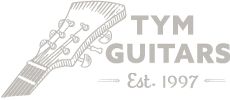1960's Victor / NIVICO SG-18 hotrod
Share
Anyone who hangs around here long will know how much I LOVE these Victors. The first time I saw one I was smitten. I think the design and overall aesthetic is beautiful. It's a long body and those straight lines on that scratchplate just works so well. They play well and are amazing guitars as well having been made for a very short time by JVC in Japan usning the fabulous Matsumoku factory for the body and neck and JVC making all the hardware. It's one of the vintage Japanese guitars that was NEVER made as any other brand and the hardware never appeared on any other guitars having been made by an electronics and appliance manufacturer especially for themselves.

The history and more info is all here so I won't go into it again. They also made a cheaper "student" model is also, I think, beautiful, although it gets more negative feedback than it's bigger brother.
Anyway, as I've been cleaning up around the workshop and getting guitars that I've had here for ages in various stages of being complete going, or hotroding as I like to call it, this one was next on the pile. I've done lots of Teiscos, Guyatones and Mosrites and more just to get them back into playing condition so people can use them.


This red burst one had been very played in it's life and someone before I bought it had taken the pickups out, probably to replace in another one as these pickups were only ever available in this model guitar, ever. Even the SG-12s had a slightly different version so, if you had an SG-18 with a dud, or removed pickup, you'd have to find another one to pilfer the pickup or get your original rebuilt.

Being that the pickups are different in size and shape from anything else, and the scratchplate is chrome folded metal, I didn't want to start cutting up a good clean scratchplate that might be used on another one some day for a restoration. I considered making an aluminium plate for it but then thought it might actually look cool with a standard plastic plate?


I traced the original plate (which also has a welded in tube for the bridge to sit in) and cut a 3 ply black plate for it.
I decided on mini humbuckers 'cause I love them, and I think they suit these sixties guitars really nicely. It's a swimming pool rout under the plate so nothing was cut or routed to do this, which is something I try hard to do with these hotrods in case someone wants make them original one day?


By going back to two pickups I used a standard three way selector switch and the master volume and tone as on the originals.

The bridges on these were NOT adjustable for height except by short grub screws on the saddles, which is fine when everything lined up new and assembly was precise, but 50 + years later I'd rather have a bit more room to move, so I fitted this generic "offset" style bridge which fits perfectly on the originals as well.
This one is the lightest of all the Nivicos I've owned (I've owned and do own a quite a few) but was also the most played with lots of scars and player wear, so I decided it was the one to mod. It's probably why it was used as a donor guitar in the first place?


The vibrato is all original and is very well designed and manufactured. These are based on the offset vibrato and came from the factory with a hold down bar like a Buzz Stop which works well. The tuners are functional and fine so I left them in place as well.

It's nice to bring these back to life. These "cheap Asian guitars" went through a lot in the 80's and 90's and lots were scraped and destroyed as they were looked on as being vastly inferior to other brands around at the time. Of course, we now know that some of these vintage Japanese guitars are as good, or better than their US equivalents and well worth saving and playing. Being a hoarder I never threw anything out so all these carcasses will live again, either as complete original guitars using correct parts from donors or as hotrods like these.

There will be more coming as I get time.
